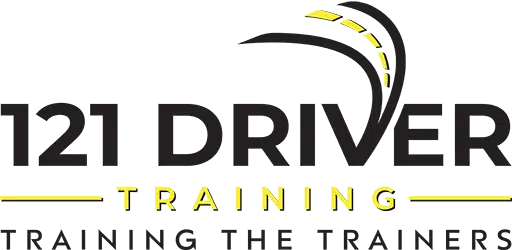Every learner embarking on the journey to become a competent driver brings their unique set of learning styles and preferences. As driving instructors, it is our responsibility to identify these differences and adapt our teaching techniques accordingly, ensuring that lessons cater to each student’s individual needs and maximise their learning potential.
At 121 Driver Training, our Driving Instructor Course equips instructors with the tools and strategies needed to recognise and adapt to diverse learning styles effectively. Through customised lesson plans, flexible teaching techniques, and a deep understanding of individual learners, we can create a supportive learning environment that caters to each student’s unique needs and fosters the development of well-rounded drivers.
Embark on an exploration of diverse learning styles and uncover how driving instructors can adapt their approaches to create truly personalised lesson plans that cater to each learner’s unique needs. By understanding and embracing this diversity, we can set the stage for driving success, fostering the development of capable, confident drivers who feel supported and nurtured throughout their learning journey.
1. Visual Learners
Visual learners process information most effectively when it is presented in a visual format, such as graphs, illustrations, or written instructions. They tend to have strong spatial awareness and may prefer to visualise concepts and techniques in their mind’s eye.
Teaching Tips:
- Use diagrams, charts, and visual aids to illustrate driving concepts and rules more clearly.
- Demonstrate manoeuvres or techniques with the vehicle, allowing the learner to observe before attempting the task themselves.
- Encourage learners to create mental images of the driving environment and visualise themselves executing complex driving tasks successfully.
2. Auditory Learners
Auditory learners thrive when information is delivered through spoken word or other auditory means. They often have a strong ability to retain information they hear and may find it easier to understand concepts through verbal explanations or discussions.
Teaching Tips:
- Provide clear, verbal explanations of driving concepts and techniques, breaking down each step into understandable components.
- Encourage the use of mnemonics or catchy phrases to help learners remember key information or techniques.
- Engage in active discussion, allowing the learner to ask questions, share their thoughts, and verbalise their understanding of driving concepts and rules.
3. Kinesthetic Learners
Kinesthetic learners learn best through hands-on experience and physical practice. These learners may have a strong sense of muscle memory and can benefit from repeated practice to grasp new driving concepts and techniques fully.
Teaching Tips:
- Allow ample opportunities for learners to practice driving manoeuvres and techniques, offering guidance and support as needed.
- Encourage learners to verbalise their actions while performing driving tasks, as this can help reinforce the learning process.
- Be patient and allow kinesthetic learners the time they need to master new skills through repeated practice.
4. Adapting to Mixed Learning Styles
It’s important to recognise that many learners may exhibit a combination of learning styles, responding to multiple types of instruction more effectively than just a single approach. Instructors should remain flexible and adaptive in their teaching methods, striving to cater to each learner’s unique blend of learning preferences.
Teaching Tips:
- Observe and assess each learner to help determine which learning styles they respond to most effectively.
- Utilise a range of teaching methods, encompassing visual, auditory, and kinesthetic approaches, to cater to diverse learning styles within a lesson.
- Be receptive to learner feedback and open to adjusting your teaching strategies as needed to maximise learning outcomes.
5. Cognitive Learning Strategies
Beyond learning styles, cognitive learning strategies play a vital role in how individuals process and retain information. Instructors can employ various cognitive strategies to enhance learning outcomes for their students.
Teaching Tips:
- Encourage active engagement by prompting learners to relate new driving concepts to their existing knowledge and experiences.
- Foster critical thinking by posing thought-provoking questions that encourage learners to analyse driving scenarios and make informed decisions.
- Incorporate repetition and spaced practice to reinforce learning and aid in long-term retention of driving skills and knowledge.
6. Emotional Intelligence in Driving Instruction
Recognising and addressing the emotional aspect of learning to drive is crucial for instructors. Emotions such as anxiety, frustration, or excitement can significantly impact a student’s ability to learn and perform effectively behind the wheel.
Teaching Tips:
- Create a supportive and non-judgmental atmosphere where learners feel comfortable expressing their concerns and fears.
- Provide positive reinforcement and constructive feedback to boost learners’ confidence and motivation.
- Teach stress-management techniques to help learners cope with anxiety or nerves while driving.
7. Integrating Technology in Driver Training
Incorporating technology can enhance the learning experience and better cater to the needs of tech-savvy learners. From simulators to interactive apps, various tools can supplement traditional instruction methods.
Teaching Tips:
- Utilise driving simulators to provide a safe environment for learners to practice challenging scenarios and develop critical driving skills.
- Recommend educational driving apps or online resources that offer interactive tutorials, quizzes, and virtual driving exercises.
- Emphasise the importance of responsible technology use while driving, teaching learners to leverage tech tools without compromising safety.
Conclusion
Embracing the diverse learning styles of our students is an essential part of our role as driving instructors, allowing us to create personalised and effective lesson plans that cater to each individual learner’s unique needs. By understanding and utilising various teaching methods and strategies, instructors at 121 Driver Training can foster an inclusive, supportive learning environment that maximises each learner’s potential for driving success.
Invest in your learners’ future and support their individual learning styles by enrolling in 121 Driver Training’s Driving Instructor Course. Empower your students with personalised, flexible instruction and watch them grow into confident, capable drivers ready to navigate the Australian roadways.




